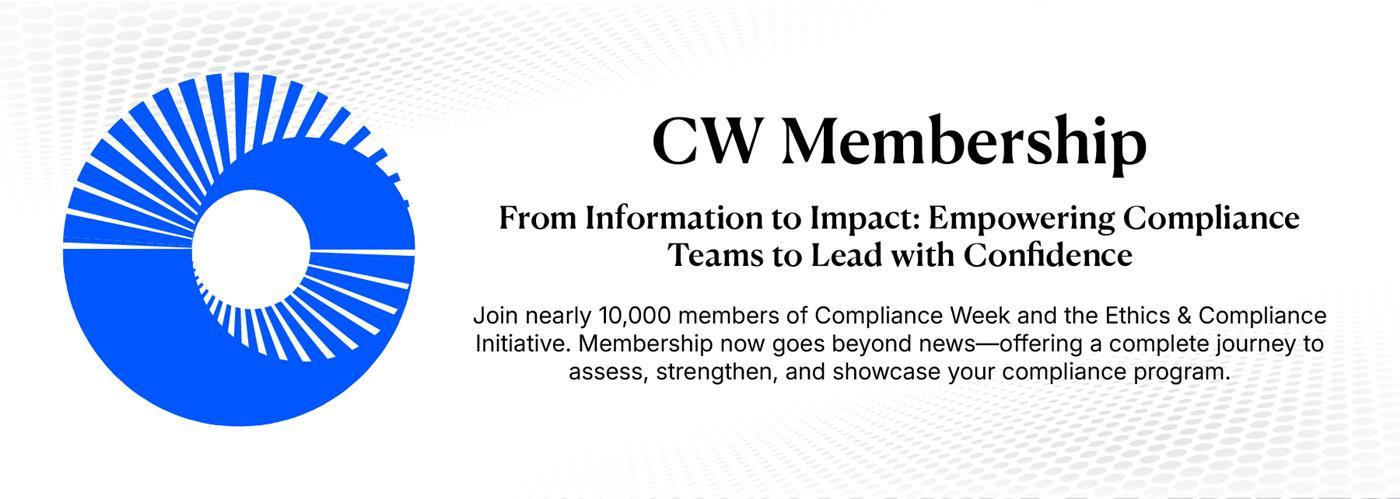- Home
-
News
- Back to parent navigation item
- News
- National Compliance Officer Day 2025
- Accounting & Auditing
- AI
- AML
- Anti-Bribery
- Best Practices
- Boards & Shareholders
- Cryptocurrency and Digital Assets
- Culture
- ESG/Social Responsibility
- Ethics & Culture
- Europe
- Financial Services
- Internal Controls
- Regulatory Enforcement
- Regulatory Policy
- Risk Management
- Sanctions
- Surveys & Benchmarking
- Supply Chain
- Third Party Risk
- Whistleblowers
- Opinion
- Benchmarking
- Certification
- Events
- Research
- Awards
-
CW Connect
- Back to parent navigation item
- CW Connect
- Sign In
- Apply
- Membership
DEI & compliance: Signs of advancement and complications
By  Aly McDevitt2021-11-18T13:00:00
Aly McDevitt2021-11-18T13:00:00

A global outcry for racial justice reached a crescendo in 2020, and corporate America pledged to “meet the moment” with transformative change. According to our “Inside the Mind of the CCO” survey, there are macro signs of companies trying to move the needle, but gaps in DEI progress remain.
THIS IS MEMBERS-ONLY CONTENT
You are not logged in and do not have access to members-only content.
If you are already a registered user or a member, SIGN IN now.
Related articles
-
 Article
ArticlePut principles to practice with ‘Bias Interrupted’
2022-05-03T12:00:00Z By Aly McDevitt
Legal scholar Joan Williams’s book delivers an avalanche of evidence-based research on structural biases in the workplace and teaches how to course correct broken systems over time by interrupting basic business functions now.
-
 Article
ArticleBreaking the glass ceiling in ethics and compliance
2022-04-18T13:11:00Z By Jane Levine, CW guest columnist
Jane Levine, chief compliance officer at DailyPay, shares three suggestions for ensuring women are empowered within the ethics and compliance profession.
-
 Article
ArticleLeaders at BlackRock, SSGA set tone for ESG-focused 2022
2022-01-24T20:43:00Z By Jaclyn Jaeger
The chief executives of BlackRock and State Street Global Advisors earlier this month published their annual letters highlighting topics of importance for the coming year, with climate action and social issues clearly remaining top of mind for both.
More from Ethics & Culture
-
 Basic Page
Basic PageNestlé CEO dismissed after code of conduct breach
2025-09-05T21:03:00Z By Aly McDevitt
Nestlé dismissed its CEO over an undisclosed relationship with a subordinate, a clear breach of the company’s code of business conduct. The dismissal underscores that no one is exempt from compliance obligations, even top leadership.
-
 Premium
PremiumColgate-Palmolive CECO Kim Faulkner discusses how ethics is embedded in the company’s strategy
2025-06-10T12:00:00Z By Aaron Nicodemus
Compliance Week’s Aaron Nicodemus sat down with Kim Faulkner, Chief Ethics & Compliance Officer at Colgate-Palmolive, to discuss the importance of ethics and compliance at the company.
-
 Analysis
AnalysisSimple steps to improve corporate training can have big impact
2025-04-30T14:25:00Z By Ian Sherr
We all have terrible attention spans. Understanding how people learn can mean the difference between effective compliance training programs or an eye roll.
- Terms and Conditions
- Privacy Policy
- Do Not Sell My Info
- © 2025 Compliance Week
Site powered by Webvision Cloud






